Ooooh Very Cool!
Ooooh very cool!
Constellations and the Calendar
Did you recently hear that NASA changed the zodiac signs? Nope, we definitely didn’t…
…Here at NASA, we study astronomy, not astrology. We didn’t change any zodiac signs, we just did the math. Here are the details:
First Things First: Astrology is NOT Astronomy…
Astronomy is the scientific study of everything in outer space. Astronomers and other scientists know that stars many light years away have no effect on the ordinary activities of humans on Earth.
Astrology is something else. It’s not science. No one has shown that astrology can be used to predict the future or describe what people are like based on their birth dates.

Some curious symbols ring the outside of the Star Finder. These symbols stand for some of the constellations in the zodiac. What is the zodiac and what is special about these constellations?

Imagine a straight line drawn from Earth though the sun and out into space way beyond our solar system where the stars are. Then, picture Earth following its orbit around the sun. This imaginary line would rotate, pointing to different stars throughout one complete trip around the sun – or, one year. All the stars that lie close to the imaginary flat disk swept out by this imaginary line are said to be in the zodiac.

The constellations in the zodiac are simply the constellations that this imaginary straight line points to in its year-long journey.
What are Constellations?
A constellation is group of stars like a dot-to-dot puzzle. If you join the dots—stars, that is—and use lots of imagination, the picture would look like an object, animal, or person. For example, Orion is a group of stars that the Greeks thought looked like a giant hunter with a sword attached to his belt. Other than making a pattern in Earth’s sky, these stars may not be related at all.

Even the closest star is almost unimaginably far away. Because they are so far away, the shapes and positions of the constellations in Earth’s sky change very, very slowly. During one human lifetime, they change hardly at all.
A Long History of Looking to the Stars
The Babylonians lived over 3,000 years ago. They divided the zodiac into 12 equal parts – like cutting a pizza into 12 equal slices. They picked 12 constellations in the zodiac, one for each of the 12 “slices.” So, as Earth orbits the sun, the sun would appear to pass through each of the 12 parts of the zodiac. Since the Babylonians already had a 12-month calendar (based on the phases of the moon), each month got a slice of the zodiac all to itself.

But even according to the Babylonians’ own ancient stories, there were 13 constellations in the zodiac. So they picked one, Ophiuchus, to leave out. Even then, some of the chosen 12 didn’t fit neatly into their assigned slice of the pie and crossed over into the next one.

When the Babylonians first invented the 12 signs of zodiac, a birthday between about July 23 and August 22 meant being born under the constellation Leo. Now, 3,000 years later, the sky has shifted because Earth’s axis (North Pole) doesn’t point in quite the same direction.

The constellations are different sizes and shapes, so the sun spends different lengths of time lined up with each one. The line from Earth through the sun points to Virgo for 45 days, but it points to Scorpius for only 7 days. To make a tidy match with their 12-month calendar, the Babylonians ignored the fact that the sun actually moves through 13 constellations, not 12. Then they assigned each of those 12 constellations equal amounts of time.
So, we didn’t change any zodiac signs…we just did the math.
Make sure to follow us on Tumblr for your regular dose of space: http://nasa.tumblr.com
More Posts from Maevetheeuropan and Others
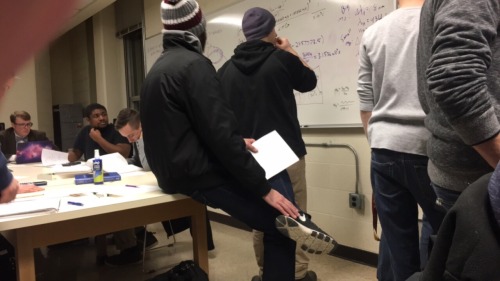
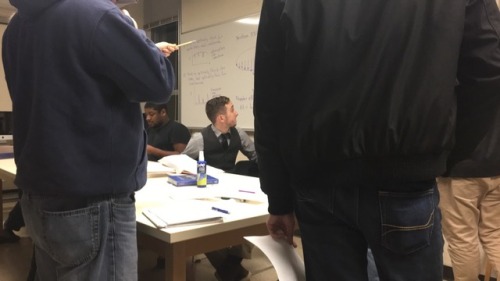
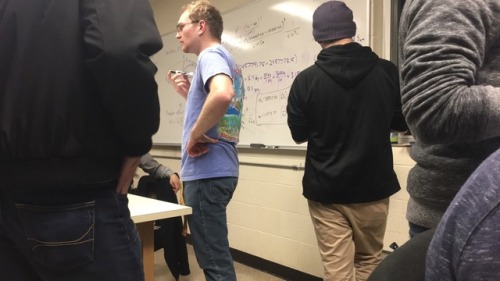
The beautiful chaos of watching 12 frantic astrophysics students try to save a theoretical astronaut from falling into a black hole. I’ve never seen a group of people work so quickly and efficiently before.
Morning on Mars
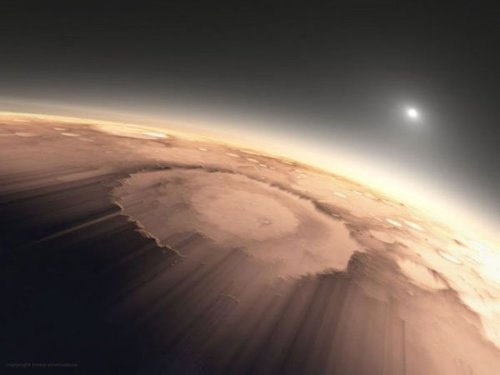
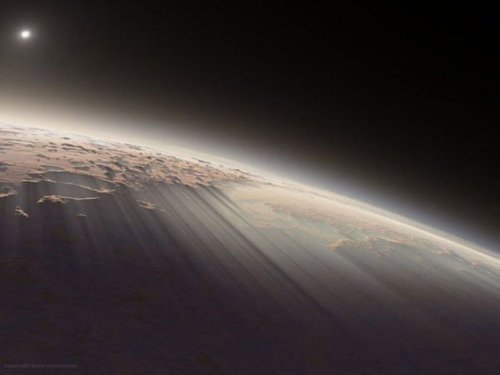
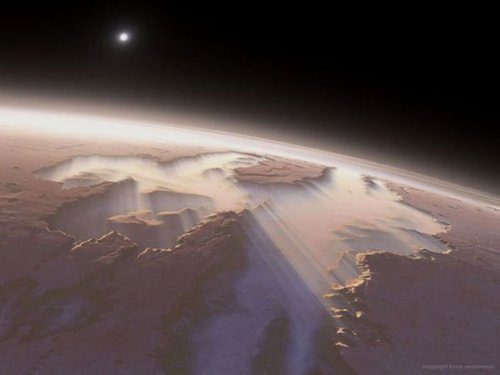
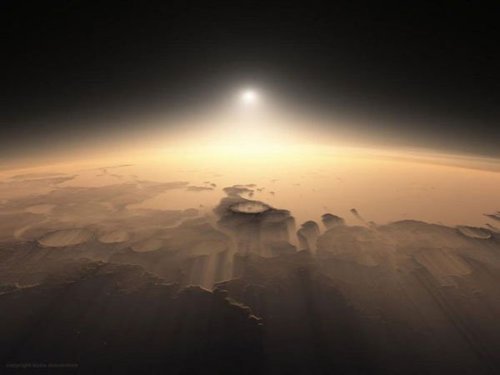
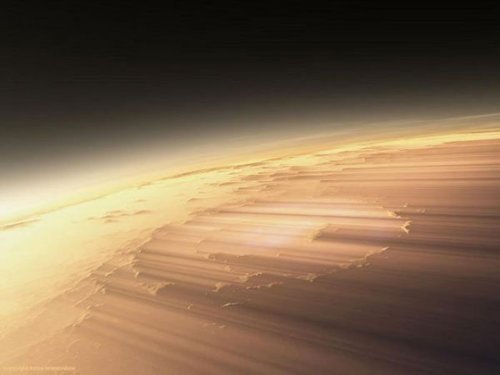
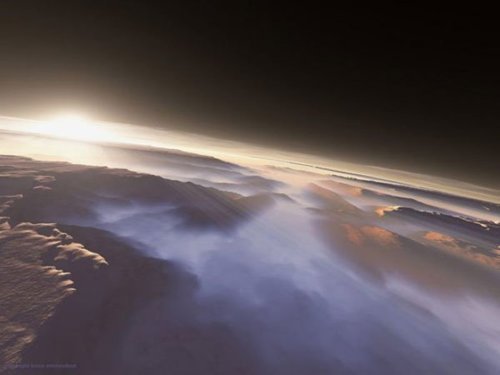
6 Martian sunrises, as seen by the HiRISE orbiter. Once again, not artist’s renditions.
Save Science
Not sure what to say. I’m actually legitimately nervous the Cheeto-in-Chief will demand a hold on the National Science Foundation grants like he did the EPA (disclaimer, the NSF is where my job comes from).
I feel so terrible for all the scientists and students who are now out of the job
Why Sequencing DNA in Space is a Big Deal
… And How You Can Talk to the Scientists Who Made It Happen

Less than one month ago, DNA had never been sequenced in space. As of today, more than one billion base pairs of DNA have been sequenced aboard the International Space Station, Earth’s only orbiting laboratory. The ability to sequence the DNA of living organisms in space opens a whole new world of scientific and medical possibilities. Scientists consider it a game changer.

NASA astronaut Kate Rubins, who has a background in genomics, conducted the sequencing on the space station as part of the Biomolecule Sequencer investigation. A small, commercial, off-the-shelf device called MinION (min-EYE-ON), manufactured by Oxford Nanopore Technologies in the UK, was used to sequence the DNA of bacteria, a virus and rodents. Human DNA was not sequenced, and there are no immediate plans to sequence human DNA in space.

(Image Credit: Oxford Nanopore Technologies)
The MinION is about the size of a candy bar, and plugs into a laptop or tablet via USB connection, which also provides power to the device. The tiny, plug and play sequencer is diminutive compared to the large microwave-sized sequencers used on Earth, and uses much less power. Unlike other terrestrial instruments whose sequencing run times can take days, this device’s data is available in near real time; analysis can begin within 10-15 minutes from the application of the sample.

Having real-time analysis capabilities aboard the space station could allow crews to identify microbes, diagnose infectious disease and collect genomic and genetic data concerning crew health, without having to wait long periods of time to return samples to Earth and await ground-based analysis.
The first DNA sequencing was conducted on Aug. 26, and on Sept. 14, Rubins and the team of scientists back at NASA’s Johnson Space Center in Houston hit the one-billionth-base-pairs-of-DNA-sequenced mark.

Have more questions about how the Biomolecule Sequencer works, or how it could benefit Earth or further space exploration? Ask the team of scientists behind the investigation, who will be available for questions during a Reddit Ask Me Anything on /r/science on Wednesday, Sept. 29 at 2 p.m. EDT.
The participants are:
Dr. Aaron Burton, NASA Johnson Space Center, Planetary Scientist and Principal Investigator
Dr. Sarah Castro-Wallace, NASA Johnson Space Center, Microbiologist and Project Manager
Dr. David J. Smith, NASA Ames Research Center, Microbiologist
Dr. Mark Lupisella, NASA Goddard Space Flight Center, Systems Engineer
Dr. Jason P. Dworkin, NASA Goddard Space Flight Center, Astrobiologist
Dr. Christopher E. Mason, Weill Cornell Medicine Dept. of Physiology and Biophysics, Associate Professor

That’s tonight fyi

Living and Working Aboard Station
Join us on Facebook Live for a conversation with astronaut Kate Rubins and the director of the National Institutes for Health on Tuesday, October 18 at 11:15 a.m. ET.
Astronaut Kate Rubins has conducted out of this world research aboard Earth’s only orbiting laboratory. During her time aboard the International Space Station, she became the first person to sequence DNA in space. On Tuesday, she’ll be live on Facebook with National Institute of Health director Francis Collins, who led the effort to map the human genome. You can submit questions for Kate using the hashtag #SpaceChat on Twitter, or during the live event. Here’s a primer on the science this PhD astronaut has been conducting to help inspire your questions:

Kate has a background in genomics (a branch of molecular genetics that deals with the study of genomes,specifically the identification and sequencing of their constituent genes and the application of this knowledge in medicine, pharmacy,agriculture, and other fields). When she began her tenure on the station, zero base pairs of DNA had been sequenced in space. Within just a few weeks, she and the Biomolecule Sequencer team had sequenced their one billionth base of DNA aboard the orbital platform.
“I [have a] genomics background, [so] I get really excited about that kind of stuff,” Rubins said in a downlink shortly after reaching the one billion base pairs sequenced goal.
Learn more about this achievement:
+First DNA Sequencing in Space a Game Changer
+Science in Short: One Billion Base Pairs Sequenced
Why is DNA Sequencing in Space a Big Deal?
A space-based DNA sequencer could identify microbes, diagnose diseases and understand crew member health, and potentially help detect DNA-based life elsewhere in the solar system.
+Why Sequencing DNA in Space is a Big Deal
https://youtu.be/1N0qm8HcFRI
Miss the Reddit AMA on the subject? Here’s a transcript:
+NASA AMA: We just sequenced DNA in space for the first time. Ask us anything!
NASA and Its Partnerships

We’re not doing this alone. Just like the DNA sequencing was a collaborative project with industry, so is the Eli Lilly Hard to Wet Surfaces investigation. In this experiment aboard the station, astronauts will study how certain materials used in the pharmaceutical industry dissolve in water while in microgravity. Results from this investigation could help improve the design of tablets that dissolve in the body to deliver drugs, thereby improving drug design for medicines used in space and on Earth. Learn more about what we and our partners are doing:
+Eli Lilly Hard to Wet Surfaces – been happening the last week and a half or so
Researchers to Test How Solids Dissolve in Space to Design Better Tablets and Pills on Earth
With our colleagues at the Stanford University School of Medicine, we’re also investigating the effects of spaceflight on stem cell-derived heart cells, specifically how heart muscle tissue, contracts, grows and changes in microgravity and how those changes vary between subjects. Understanding how heart muscle cells change in space improves efforts for studying disease, screening drugs and conducting cell replacement therapy for future space missions. Learn more:
+Heart Cells
+Weekly Recap From the Expedition Lead Scientist for Aug. 18, 2016
It’s Not Just Medicine

Kate and her crew mates have also worked on the combustion experiments.
Kate has also worked on the Bigelow Expandable Activity Module (BEAM), an experimental expandable capsule that docks with the station. As we work on our Journey to Mars, future space habitats are a necessity. BEAM, designed for Mars or other destinations, is a lightweight and relatively simple to construct solution. Kate has recently examined BEAM, currently attached to the station, to take measurements and install sensors.

Kate recently performed a harvest of the Plant RNA Regulation experiment, by removing seed cassettes and stowing them in cold stowage.

The Plant RNA Regulation investigation studies the first steps of gene expression involved in development of roots and shoots. Scientists expect to find new molecules that play a role in how plants adapt and respond to the microgravity environment of space, which provides new insight into growing plants for food and oxygen supplies on long-duration missions. Read more about the experiment:
+Plant RNA Harvest
NASA Astronaut Kate Rubins is participating in several investigations examining changes in her body as a result of living in space. Some of these changes are similar to issues experienced by our elderly on Earth; for example, bone loss (osteoporosis), cardiovascular deconditioning, immune dysfunction, and muscle atrophy. Understanding these changes and how to prevent them in astronauts off the Earth may help improve health for all of us on the Earth. In additional, the crew aboard station is also working on more generalized studies of aging.
+ Study of the effects of aging on C. elegans, a model organism for a range of biological studies.
Unfollow me if you wish, but this blog will NEVER support Trump and instead supports the LGBT community, racial minorities, women, people with disabilities, immigrants, Muslims, Jewish people, and anyone else who is afraid now. I am with you, and this will always be a safe space for you.

The Body’s Price on Space Exploration
It can be easy to get wrapped up in the dollar amount when talking about the price of sending humans to Mars but there is a factor that no amount of government or private funding can overcome: the human body.
Read more on Miss Aerospace


Scientists find another sign suggesting life existed on Mars
According to new research published in the Journal of Geophysical Research, scientists are getting even more indicators that life once existed on Mars. The latest proof? Carbonates found in 3.8 billion-year-old rock in the Huygens basin.
Follow @the-future-now
-
 neptunianfairy liked this · 2 months ago
neptunianfairy liked this · 2 months ago -
 fairyspacepunk reblogged this · 2 months ago
fairyspacepunk reblogged this · 2 months ago -
 fairyspacepunk liked this · 2 months ago
fairyspacepunk liked this · 2 months ago -
 sunsetdeathcity liked this · 2 months ago
sunsetdeathcity liked this · 2 months ago -
 wisegirl25 liked this · 3 months ago
wisegirl25 liked this · 3 months ago -
 eel-of-the-void reblogged this · 3 months ago
eel-of-the-void reblogged this · 3 months ago -
 i-made-the-sky-purple reblogged this · 3 months ago
i-made-the-sky-purple reblogged this · 3 months ago -
 i-made-the-sky-purple liked this · 3 months ago
i-made-the-sky-purple liked this · 3 months ago -
 arerepostsofizzyizumiworkdeleted reblogged this · 3 months ago
arerepostsofizzyizumiworkdeleted reblogged this · 3 months ago -
 shamyatha liked this · 4 months ago
shamyatha liked this · 4 months ago -
 soonini1288 liked this · 4 months ago
soonini1288 liked this · 4 months ago -
 dracha1991 liked this · 4 months ago
dracha1991 liked this · 4 months ago -
 spacerockfloater liked this · 4 months ago
spacerockfloater liked this · 4 months ago -
 chuustrider reblogged this · 5 months ago
chuustrider reblogged this · 5 months ago -
 chuustrider reblogged this · 5 months ago
chuustrider reblogged this · 5 months ago -
 chuustrider liked this · 5 months ago
chuustrider liked this · 5 months ago -
 indighost17 reblogged this · 5 months ago
indighost17 reblogged this · 5 months ago -
 morphinez liked this · 5 months ago
morphinez liked this · 5 months ago -
 roseate-felidae liked this · 6 months ago
roseate-felidae liked this · 6 months ago -
 thenerdyrehelps liked this · 6 months ago
thenerdyrehelps liked this · 6 months ago -
 darnitjack liked this · 6 months ago
darnitjack liked this · 6 months ago -
 xxriverspirit reblogged this · 6 months ago
xxriverspirit reblogged this · 6 months ago -
 xxriverspirit liked this · 6 months ago
xxriverspirit liked this · 6 months ago -
 annoyingbean630 liked this · 6 months ago
annoyingbean630 liked this · 6 months ago -
 slightlyobsessedwithharrystyles reblogged this · 6 months ago
slightlyobsessedwithharrystyles reblogged this · 6 months ago -
 slightlyobsessedwithharrystyles liked this · 6 months ago
slightlyobsessedwithharrystyles liked this · 6 months ago -
 thiefofgenders reblogged this · 6 months ago
thiefofgenders reblogged this · 6 months ago -
 chaos-pit liked this · 6 months ago
chaos-pit liked this · 6 months ago -
 f4t4-m0rg4n4 reblogged this · 7 months ago
f4t4-m0rg4n4 reblogged this · 7 months ago -
 pococurantesupremediety reblogged this · 7 months ago
pococurantesupremediety reblogged this · 7 months ago -
 secondbestsam liked this · 7 months ago
secondbestsam liked this · 7 months ago -
 hikari-m reblogged this · 7 months ago
hikari-m reblogged this · 7 months ago -
 kalebarley reblogged this · 7 months ago
kalebarley reblogged this · 7 months ago -
 furmity reblogged this · 7 months ago
furmity reblogged this · 7 months ago -
 hyperion0451 liked this · 7 months ago
hyperion0451 liked this · 7 months ago -
 chaoticgenderpuddle liked this · 7 months ago
chaoticgenderpuddle liked this · 7 months ago -
 towalkmyownpath reblogged this · 7 months ago
towalkmyownpath reblogged this · 7 months ago -
 glowyjellyfish reblogged this · 7 months ago
glowyjellyfish reblogged this · 7 months ago -
 glowyjellyfish liked this · 7 months ago
glowyjellyfish liked this · 7 months ago -
 roguemortal reblogged this · 7 months ago
roguemortal reblogged this · 7 months ago -
 zarohk reblogged this · 7 months ago
zarohk reblogged this · 7 months ago -
 furmity liked this · 7 months ago
furmity liked this · 7 months ago -
 ultrablueberryme liked this · 7 months ago
ultrablueberryme liked this · 7 months ago -
 glaxyjellyfish reblogged this · 7 months ago
glaxyjellyfish reblogged this · 7 months ago -
 balljointedfairy liked this · 7 months ago
balljointedfairy liked this · 7 months ago -
 cloud-obsessed-infp liked this · 7 months ago
cloud-obsessed-infp liked this · 7 months ago -
 silverblood10 liked this · 7 months ago
silverblood10 liked this · 7 months ago -
 stonelarkquetzal reblogged this · 7 months ago
stonelarkquetzal reblogged this · 7 months ago -
 southsuns liked this · 7 months ago
southsuns liked this · 7 months ago